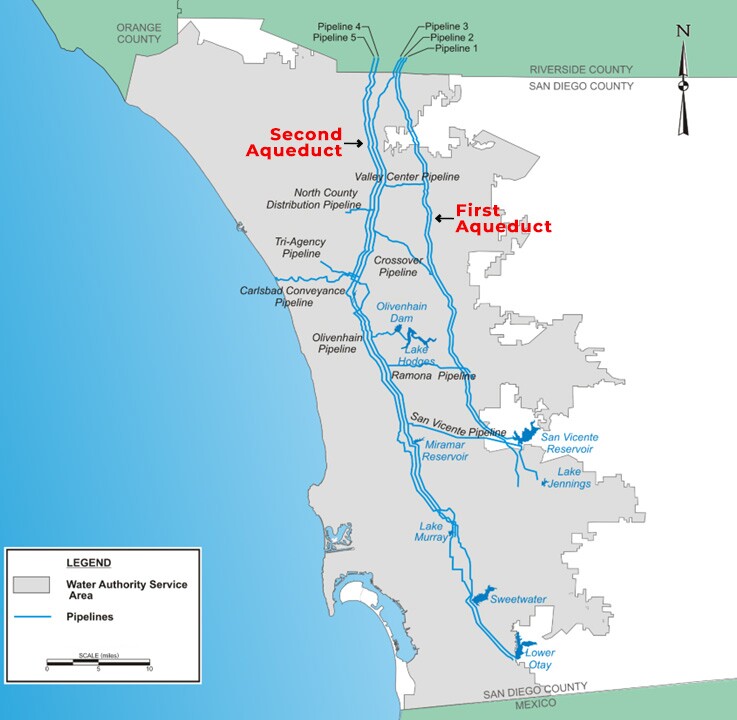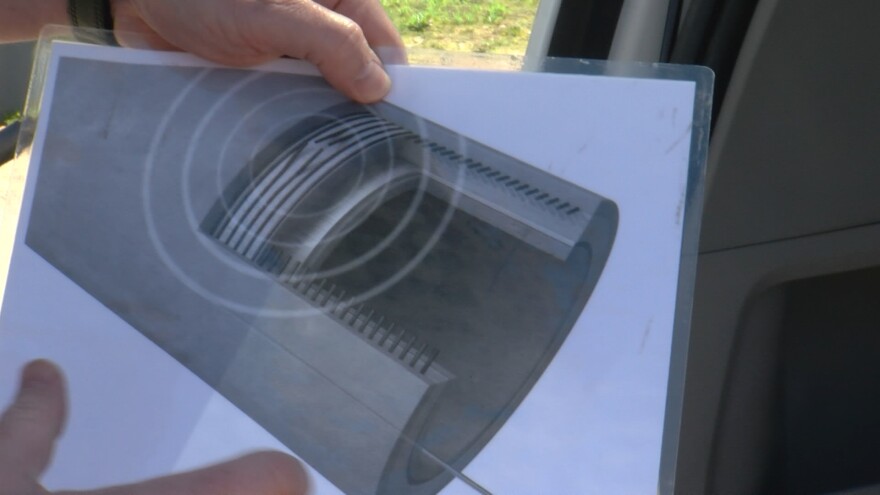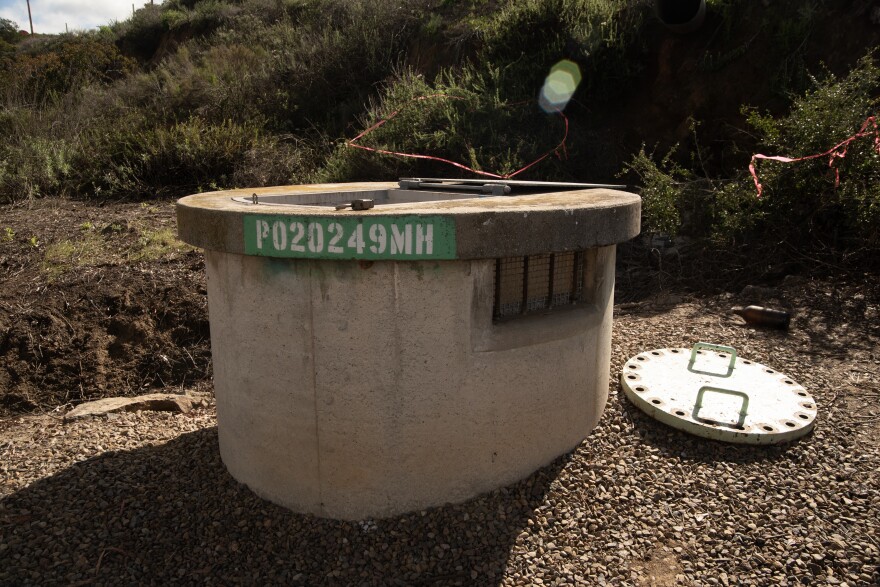It takes a lot of pipelines to get water to all of San Diego County’s nearly three-and-a-half-million people. This story is about large-diameter pipelines.
Three hundred eight miles of those big pipes run all through the county, delivering water to the San Diego County Water Authority and its 23 member agencies. So, it’s critical those pipelines are properly maintained.
“These large diameter pipelines are known in the industry as transmission pipelines. So they’re like the main arteries in your body," said Martin Coghill.


Sticking with the medical analogy, you might call Martin Coghill the lead physician when it comes to the health of this area’s water transmission pipelines. His actual title is operations and maintenance manager for asset management for the Water Authority.
“So, there’s visual, with us climbing inside the pipelines and then also using video technology," Coghill said.
Before heading to the area at the Goodan Ranch Preserve where the pipeline maintenance was happening, Coghill did a bit of show and tell, revealing the different ways he and his colleagues have of determining what shape the all-important transmission pipelines are in.
“And then there’s acoustics, and we have acoustic fiber optic cable which goes in some of our pipelines," Coghill said while showing a black and white cutout picture of the configuration of the pipe.
High tension wires were shown that would snap if something went wrong. The fiber optic cable then picks up that noise and reveals exactly where there’s a problem.
And there’s another kind of acoustic measuring device, a foam ball, or more precisely, an acoustic leak detection ball.
“This goes inside this foam insert and the technology inside this ball can hear leaks as this flows through the pipeline," Coghill said as he showed the device.
Back to the visual aspect, there is a device, invented by Coghill, which he calls “Scanny.” It makes high-resolution video surveillance possible in areas where it’s a challenge for humans to be in the pipes.
“Some of them go through very steep sections and that requires specialist rope support for the specialists that are inside the pipelines," he said.
In other words, it’s risky for people. With Scanny, you get the surveillance without the danger.
“Scanny allows for us to lower the device with an array of seven cameras so that we can get the equivalent resolution from someone being inside the pipe done via the cameras," Coghill said as he held the center disc that holds Scanny together.
There’s another device being used for this inspection — it's at a pipe access point just down the road. It's an electromagnetic tool, invented by the company doing this part of the inspection — PICA, the Pipeline Inspection and Condition Analysis Corporation.

“This is quite an ingenious tool. They’ve used inflatable surfboard technology to make this tool," Coghill said.
A series of discs are all put down into the pipe, where a worker joins them together. Then, they’re inflated, and the high resolution technology goes to work.
“The sensors will fit to the entire circumference of the pipeline," Coghill said. "We can find the local corrosion spots that might be occurring to the pipeline, within the pipeline, and while they may seem small, with the pressures and the volumes of water that we have inside the pipeline, even a leak can be quite devastating."
This work is being done on pipelines built in the 1940s and 1950s. The newer line is being inspected now with repairs to follow, then the older one is up next for inspection and repairs.
“This condition assessment, which involves 15 miles, we anticipate will be complete in about four to five weeks," Coghill said. "There is some other work going on in this pipeline to rehabilitate these structures, and that will take about a year and so in a year’s time we will actually finish that rehabilitation work and we’ll switch the pipelines over."
Coghill said they wouldn’t have been able to do this inspection 10 years ago. The difference? Conservation by water users in San Diego County.
“The demands have come down sufficiently enough that we can isolate one pipeline from the other and just supply for this time of year using one pipeline," Coghill said.
And so the work continues, the never-ending work of keeping the pipelines in good shape. The pipelines that deliver something no living thing on earth can do without: the elixir of life, water.












